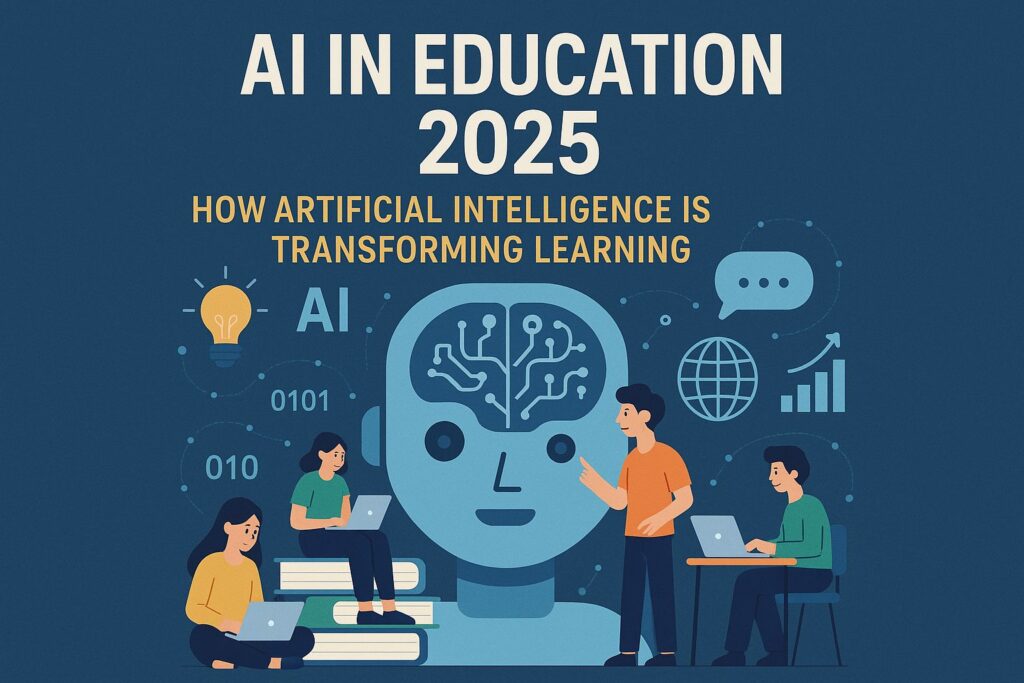Education is undergoing a massive shift in 2025. With Artificial Intelligence (AI) evolving rapidly, classrooms are no longer limited to textbooks and lectures. Instead, students and teachers are embracing AI-powered tools that make learning more personalized, interactive, and accessible.
In this blog, we’ll explore how AI is transforming education in 2025, its benefits, challenges, and what the future holds.
What is AI in Education?
AI in education refers to the use of artificial intelligence technologies—such as machine learning, natural language processing, and generative AI—to enhance the learning experience. From virtual tutors to automated grading, AI is helping students learn smarter and teachers teach better.
Key Applications of AI in Education (2025)
1. Personalized Learning Paths
AI analyzes a student’s strengths, weaknesses, and learning pace to create custom study plans. Instead of one-size-fits-all teaching, students now receive lessons tailored to their needs.
2. AI-Powered Tutors & Chatbots
Students can access 24/7 virtual tutors that explain concepts, answer questions, and provide practice tests—just like having a personal teacher on demand.
3. Smart Content Creation
AI tools like quiz generators, study guides, and interactive lessons help teachers save time while providing engaging content for students.
4. Automated Grading & Feedback
Assignments, essays, and multiple-choice tests can be graded by AI, allowing teachers to focus more on mentoring instead of paperwork.
5. Immersive Learning with AI + AR/VR
In 2025, AI is powering virtual labs, 3D simulations, and immersive classrooms, making complex subjects like science and history easier to understand.
6. Language Learning with AI
AI-powered apps help students learn new languages with real-time speech recognition and feedback, improving fluency faster.
Benefits of AI in Education
- Accessibility: AI tools support students with disabilities through text-to-speech, speech-to-text, and translation features.
- Efficiency: Teachers spend less time on admin tasks and more time on teaching.
- Engagement: Interactive AI lessons make learning more fun.
- Equity: Students worldwide can access quality education, even in remote areas.
Challenges of AI in Education
While AI is powerful, it also raises concerns:
- Data Privacy: Protecting student data is critical.
- Over-Reliance: Students may become too dependent on AI tools.
- Teacher Training: Educators need to adapt to new technologies.
- Cost Barriers: Not all schools can afford advanced AI tools.
Future of AI in Education
By 2030, experts predict that AI will become a core part of global education systems, enabling:
- Lifelong AI-powered learning assistants for every student.
- Predictive analytics to identify struggling learners early.
- Global classrooms, where students from different countries learn together via AI-driven platforms.
AI in Education 2025 is more than a trend—it’s a revolution. With personalized learning, smart tutoring, and immersive experiences, AI is making education smarter, faster, and more accessible. While challenges exist, the opportunities far outweigh them.
For students, AI means a personalized study partner. For teachers, it’s a time-saving assistant. And for the world, it’s a step toward inclusive and equitable education.



